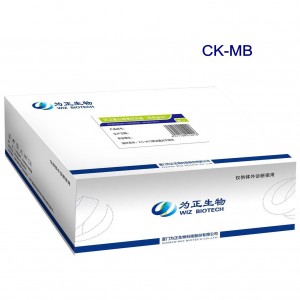Zhao, Z. Q. & Vinten-Johansen, J. Postconditioning: reduction of reperfusion-induced injury. Cardiovasc Res. 70, 200–211 (2006).
Giấy phép thiết lập trang Thông tin điện tử tổng hợp số: 692/GP-TTĐT cấp ngày 29/10/2010 bởi
Objectives: Outcome assessment is an important part of the management of airways disease, yet older adults may have difficulty with the burden of testing. This study evaluated the patient perception of tests used for the assessment of airways disease in older people. Data Source: Older adults (>55 years) with obstructive airway disease and healthy controls (N=56) underwent inhaler technique assessment, skin allergy testing, venepuncture, fractional exhaled nitric oxide (FENO) and gas diffusion measurement, exercise testing, sputum induction, and questionnaire assessment. They then completed an assessment burden questionnaire across five domains: difficulty, discomfort, pain, symptoms and test duration. Results: Test perception was generally favourable. Induced sputum had the greatest test burden perceived as being more difficult (mean 0.83, P=0.001), associated with more discomfort (mean 1.3, P<0.001), more painful (0.46, P=0.019), longer test duration (0.84, P<0.001) and worsening symptoms (0.55, P=0.001) than the questionnaires. FENO had a more favourable assessment but was assessed to be difficult to perform. Inhaler technique received the most favourable assessment. Conclusions: Older adults hold favourable perceptions to a range of tests that they might encounter in the course of their care for airway disease. The newer tests of sputum induction and FENO have some observed difficulties, in particular sputum induction. The results of this study can inform current practice by including details of the test and its associated adverse effects when conducting the test, as well as providing clear explanations of the utility of tests and how the results might aid in patient care. © 2013 John Wiley & Sons Ltd.
H.Z.Y. conceived the research; J.X.H.W. designed and carried out the experiments; X.L. designed and conducted some preliminary experiments; F.S.F.L. wrote the customized app; J.X.H.W. and H.Z.Y. wrote the manuscript.

Editor-in-chief: Alora Uy Guerrero has 16 years of experience as an editor for print and digital publications such as Yahoo. She took time off journalism to manage OPPO’s digital-marketing campaigns. When not busy with her babies, she’s working on Revü, a passion project — or probably traveling or obsessing over her favorite bands, movies, TV shows, and basketball teams.
My thanks to the Zionist commentators for giving me more material for my project on the Zionist Cult. Very helpful!
In April 2013, Luminex received FDA clearance for its MAGPIX instrument, with its xTAG Gastrointestinal Pathogen Panel (xTAG GPP). This is the first clinical assay to be cleared on this instrument. It can simultaneously detect 11 common viral, bacterial, and parasitic causes of infectious gastroenteritis from a single patient sample. Other multimarker panels include Crescendo Bioscience’s Vectra DA panel for rheumatoid arthritis and Fujirebio’s ROMA panel to determine the likelihood of finding a malignancy on surgery in women who present with adnexal mass.
Men at higher risk of prostate cancer death, such as those with a family history of prostate cancer or of African descent, may be more likely to choose PSA screening after discussion of potential benefits and harms of testing with their doctor, the authors concluded.

Kumar, K. G. et al. SCF(HOS) ubiquitin ligase mediates the ligand-induced down-regulation of the interferon-alpha receptor. EMBO J 22, 5480–5490 (2003).
The sequence survey method is based on amplifying the 16S rRNA gene of bacteria using universal primers and then counting the presence of the different 16S rRNA gene sequences. In order to be counted, the bacteria must constitute 1/n or more (where n is the number of sequences counted) of the community. Since n is on average 3,900, the bacteria in question must be â¼0.03% of the sample, and those near the cutoff level are also subject to sampling error (for an example, see Fig. 1B in reference 16). The method cannot distinguish among the pathotypes of E. coli and Shigella spp. However, the method did distinguish among Aeromonas spp., C. jejuni, S. enterica, and C. difficile as expected, and for the latter three, the method detected these pathogens at levels that were most similar to those of the GoldenGate method. The two methods revealed moderate agreement for C. jejuni. The Universal Biosensor method for detecting C. jejuni and C. difficile is based on the detection of 16S rRNA genes, and the underestimation of these pathogens is likely the result of the complexity of the stool samples such that even in samples from cases, the sequence-based method yielded extremely large numbers of distinct 16S rRNA gene sequences. The amplification of the whole sample for the sequencing approach raises the question of whether an alternative approach, like complete shotgun sequencing using next-generation sequencing, would detect taxa similar to those detected by the other methods.
Browse More Reports Of This Category By Grand View Research At: www.grandviewresearch.com/industry/clinical-diagnostics
The quality of medical education during internship is a cause for concern. This paper describes a structured educational programme for interns that was based around learning modul… [more]
Prostate cancer test IsoPSA could reduce biopsies by 50% | P24 Test Strips Related Video:
Our advancement depends on the superior gear ,superb talents and consistently strengthened technology forces for Ev71 Rapid Test , Chlamydia Test Strip , Rapid Test Kit , With strong technical strength and advanced production equipment, and SMS people purposefully , qualified, dedicated spirit of enterprise. Enterprises took the lead through the ISO 9001:2008 international quality management system certification, CE certification EU ; CCC.SGS.CQC other related product certification. We look forward to reactivating our company connection.






